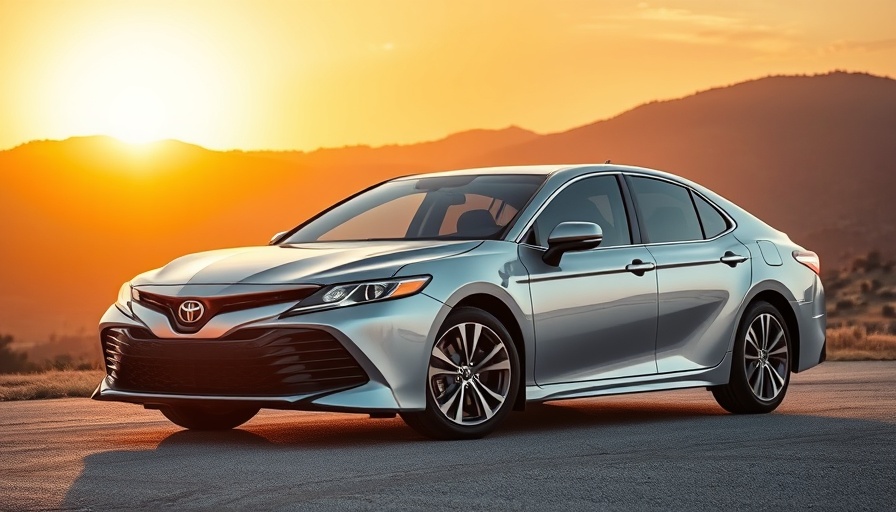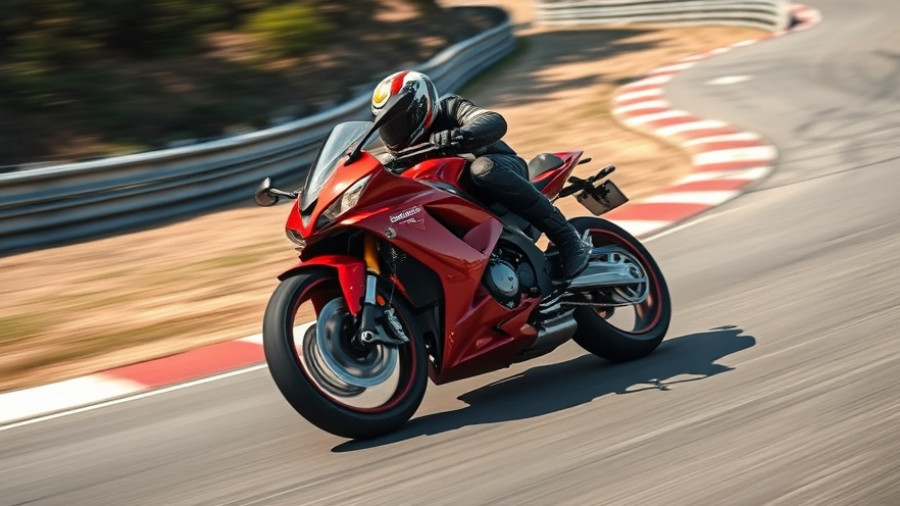
The Emerging Price Landscape of the 2025 Toyota Camry
The Toyota Camry has remained a staple in the midsize sedan market, notably for its reliability and value. As we look ahead to 2025, the cost of a fully loaded Toyota Camry is projected to start at $38,700, a significant increase from previous years, reflecting broader market trends and inflationary pressures on the automotive industry.
Understanding Average Consumer Financing
With car payment terms stretching an average of 68.6 months, or about 5.7 years, 2025 presents a unique challenge for buyers. Many Americans may feel squeezed financially, making it crucial to understand the implications of long-term financing on overall car ownership costs. In this context, the Toyota Camry's competitive pricing at $28,700 for the base model offers a sweet spot for budget-conscious consumers looking for reliability and performance.
A Closer Look at Hybrid Technology
One of the Camry's notable innovations for 2025 is its fuel economy. The hybrid version boasts impressive ratings of 53 MPG city and 50 MPG highway, making it a leader in fuel efficiency. As consumers increasingly prioritize eco-friendly vehicles, understanding the pros and cons of hybrid technology is essential. While hybrids may come with higher upfront costs, the long-term savings on fuel can significantly offset the initial investment.
Comparing Trims and Features
The 2025 Toyota Camry will offer a variety of trims, each with its unique set of features and performance capabilities. Buyers can expect advanced car technology features, including an updated infotainment system that integrates seamlessly with smartphones. The availability of these features can significantly affect a buyer's decision, especially as technology becomes a critical factor in car purchases. For instance, the fully loaded Camry may include enhanced safety features that cater to the growing demand for top safety-rated cars.
Future Predictions: What Can Consumers Expect?
Looking ahead, industry experts speculate that innovations in car technology and shifting consumer preferences towards hybrid and electric vehicles will play a significant role in the evolution of midsize sedans like the Camry. If current trends persist, we can expect even more enhancements in real-world MPG and car performance analysis to assure consumers they are making a wise investment.
Financial Insights: The Importance of Car Ownership Costs
The decision to purchase a vehicle like the 2025 Toyota Camry goes beyond just the sticker price. Buyers must consider depreciation costs, maintenance expenses, and fuel consumption. Car ownership cost calculators can help prospective buyers make informed decisions by illustrating total estimated costs over the vehicle's lifespan. As we move further into 2025, these insights will be vital in shaping consumer choices.
Conclusion: Making Informed Decisions
The fully loaded Toyota Camry's projected pricing and features are reflective of a greater automotive landscape grappling with inflation and technological advancement. For consumers contemplating a midsize sedan, understanding these aspects— from fuel efficiency to financing options— is essential. As we venture into a new era of automotive innovation, being informed is more critical than ever.
 Add Row
Add Row  Add
Add 




Write A Comment